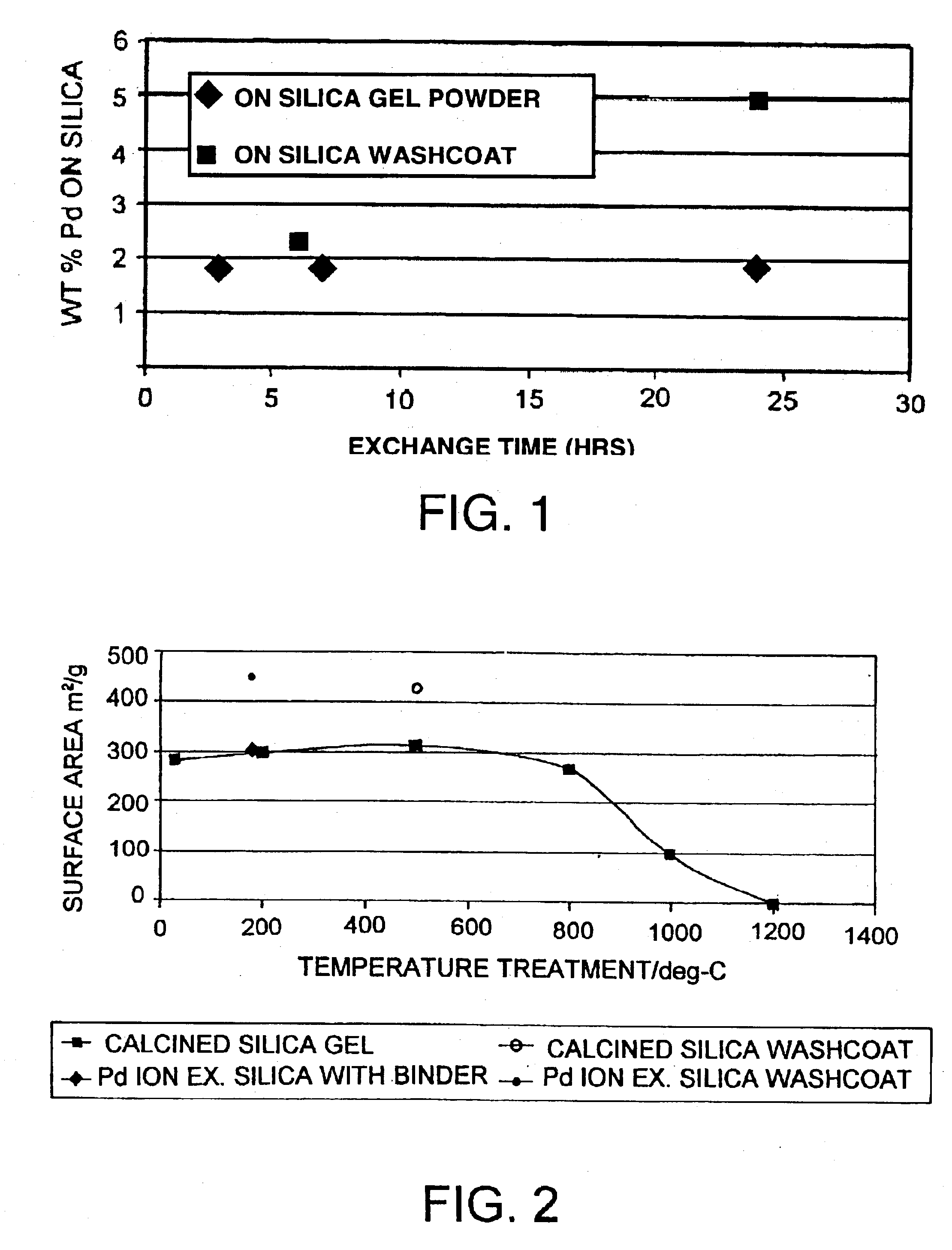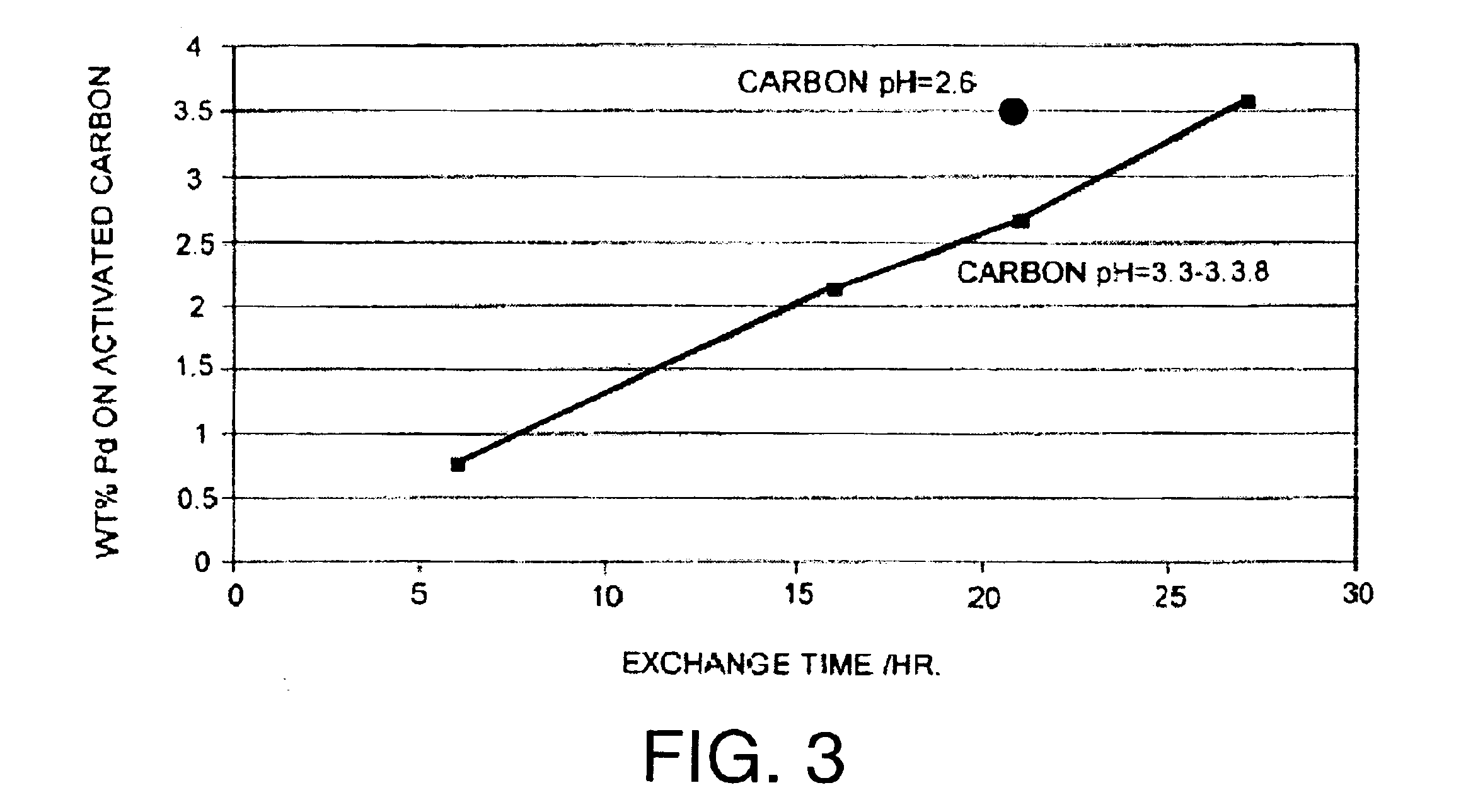Supported metal catalysts
a metal catalyst and support technology, applied in the direction of physical/chemical process catalysts, fatty acid chemical modification, separation processes, etc., can solve the problems of affecting the adhesion strength of the substrate, the adhesive strength of the substrate is not sufficient, and the adhesion strength is not sufficient, so as to achieve excellent chemical compatibility and improve the durability
- Summary
- Abstract
- Description
- Claims
- Application Information
AI Technical Summary
Benefits of technology
Problems solved by technology
Method used
Image
Examples
example 1
[0035]Tetraethyl orthosilicate (TEOS) is acid-hydrolyzed with hydrochloric acid and water to yield between 70% to 90% hydrolysis according to the following formula:
Si(OC2H5)4+2XH2O→[Si(OC2H5)4(l-x)(O)2x]+4XC2H5OH.
[0036]After the acidified water phase disappears, silicon dioxide is added in an amount that represents from about 50% to 70% by weight of the resulting slurry. The resulting alcohol slurry of silica and polymeric siloxyl and hydroxylated species have a viscosity sufficient for washcoating. A cordierite honeycomb solid support is dipped into the slurry and dried. The process is repeated to achieve a desired thickness. After the washcoated solid support is calcined, a catalyst is distributed on the coating using ion exchange technique.
[0037]FIG. 1 illustrates a comparison between the amount of palladium exchanged on silica gel powder as a function of ion exchange time with the amount of palladium exchange on a silica washcoat in accordance with the invention. FIG. 1 indicate...
example 2
[0039]Tetraethyl orthosilicate (TEOS) is combined with an aqueous slurry of either fused silica, silica gel, fumed silica, calcined or uncalcined silicic acid, and silica onto which a catalyst has been impregnated, and less than two volume percent hydrochloric acid, and mixed to initiate an in situ hydrolysis of the TEOS in the slurry. After a uniform consistency has been achieved in the slurry, honeycomb-shaped solid supports are coated with the slurry and dried. The process is repeated as necessary to increase the coating thickness as desired.
example 3
[0040]The same procedure is followed as in Example 2, except that the silicon dioxide is ion exchanged with a catalyst salt before preparing it in a washcoat. Once the slurry is uniform, honeycomb-shaped solid supports are coated with the slurry and dried. The washcoats are then calcined and the catalyst is reduced.
PUM
| Property | Measurement | Unit |
|---|---|---|
| particle size | aaaaa | aaaaa |
| temperature | aaaaa | aaaaa |
| temperature | aaaaa | aaaaa |
Abstract
Description
Claims
Application Information
 Login to View More
Login to View More - R&D
- Intellectual Property
- Life Sciences
- Materials
- Tech Scout
- Unparalleled Data Quality
- Higher Quality Content
- 60% Fewer Hallucinations
Browse by: Latest US Patents, China's latest patents, Technical Efficacy Thesaurus, Application Domain, Technology Topic, Popular Technical Reports.
© 2025 PatSnap. All rights reserved.Legal|Privacy policy|Modern Slavery Act Transparency Statement|Sitemap|About US| Contact US: help@patsnap.com


